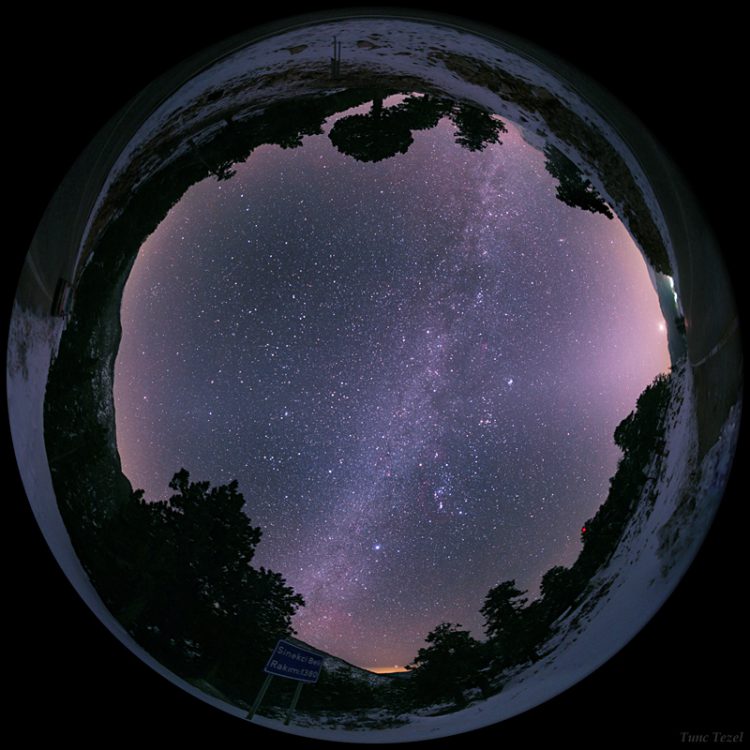Milky Way and Zodiacal Band
Description
The Milky Way and the zodiacal light are captured in this all-sky view of a winter night from Sinekci Pass in Toros Mountains of southern Turkey, on the way to Kas by the Mediterranean coast. The southern star Canopus (the second brightest of the night sky) is also recorded just above the illuminated cloud in the southern horizon. To experience this scene as it was viewed by the photographer click here and allow few moments for the flash video to load.
The dust disk extending out to Jupiter’s orbit produces a faint glow all along the ecliptic, the path of the sun in the heavens. This known as zodiacal light decreases in intensity with distance from the Sun, but on very dark nights it has been observed in a band completely around the ecliptic (as visible in this image). In fact, the zodiacal light covers the entire sky, being responsible for 60% of the total skylight on a moonless night. There is also a very faint, but still slightly increased, oval glow directly opposite the Sun known as the gegenschein (German for “counter glow”) which can be seen 180 degrees around from the Sun in an extremely dark sky (note this glow on the left side of the image above the eastern horizon).
Move the slider on the image to see the constellation lines and star names.




comments (1)